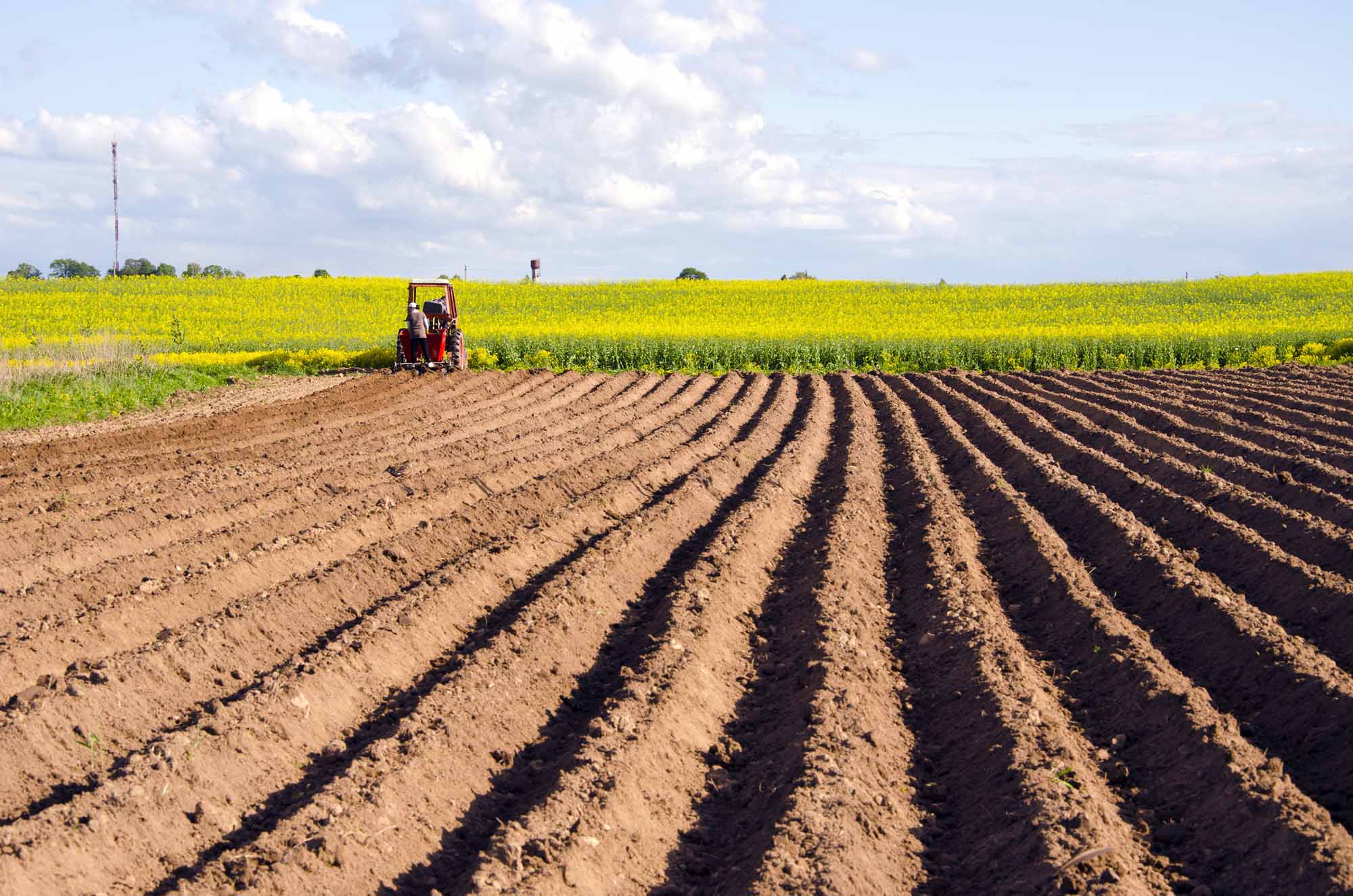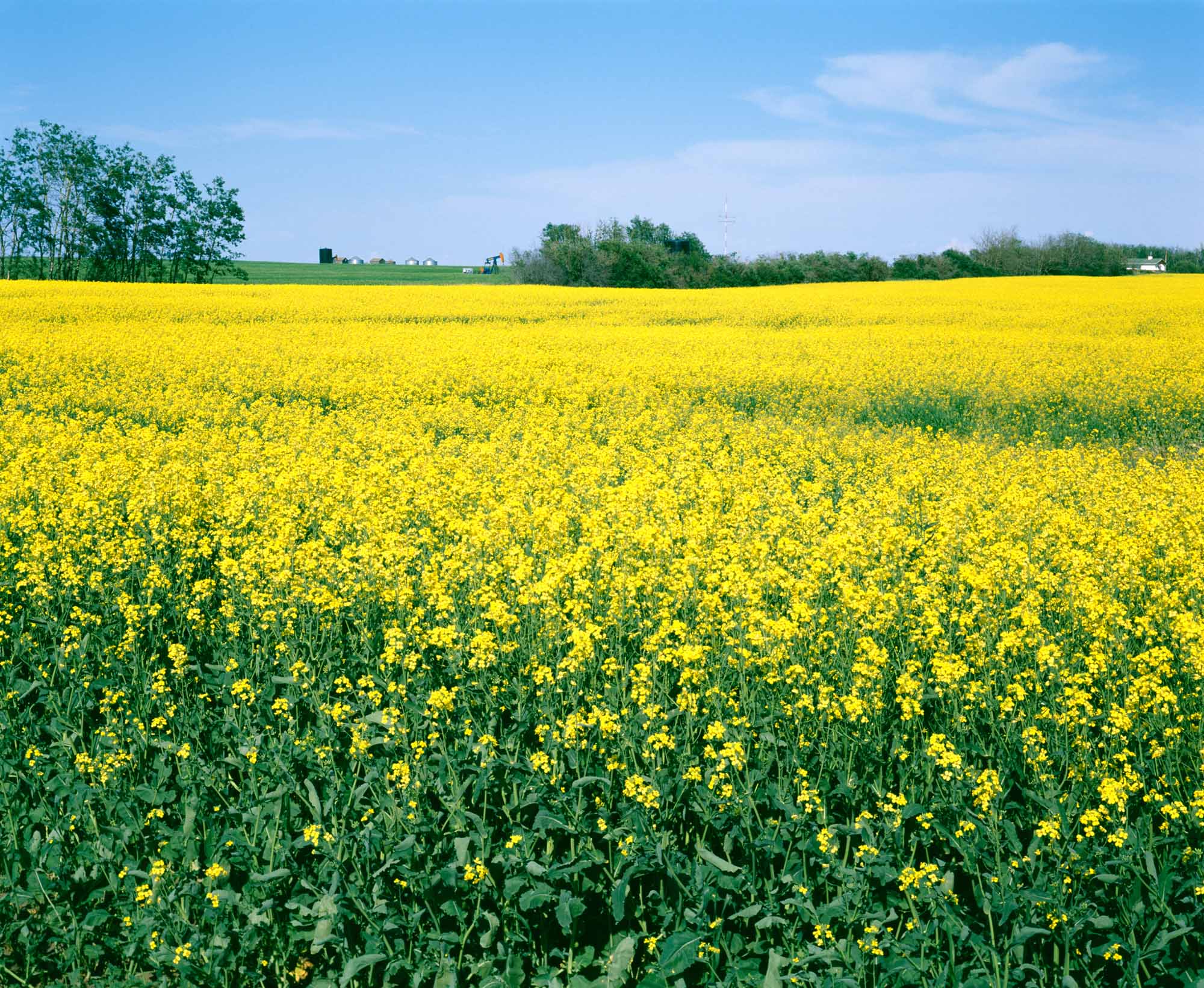Agriculture is the practice of growing crops and raising animals for food. It can also be called farming. Farming is important to Canada. Now, Canadian farms face many challenges. Two of the biggest challenges are climate change and soil conservation.
This article is a plain-language summary of Agriculture in Canada. If you are interested in reading about this topic in more depth, please see our full-length entry, Agriculture in Canada.

The Agriculture Sector in Canada
Agriculture is a big part of the Canadian economy. In 2018, 269,000 people worked on farms. Canadian farmers grow food for Canadians and many other people around the world. In addition to wheat, Canadian farmers also grow canola, vegetables and fruits. (See also Fruit Cultivation.) Canadian farmers also raise a lot of cattle. (See also Beef Cattle Farming; Dairy Farming.)
Canadian products sold outside of Canada are called exports. Canadian farmers are among the biggest food exporters in the world. In 2016 they sold $60 billion dollars worth of exports.
Aquaculture has become important lately. Aquaculture is the raising of fish. There is also something called protected cultivation. This is the growing of crops in greenhouses or warehouses. Organic farming is popular now too. No chemicals are used in organic farming. (See also Organic Agriculture.)
Farmland and Farms
Most land in Canada is not good for farming. Only 7 per cent of the land can be used. Some of this land is used for ranching (see Ranching History). A ranch is a farm where cattle and animals are raised. Most ranches are in the Prairies, especially Alberta. Most of the farmland is in the Prairies too. Farms have gotten bigger lately. Individual farmers owned most farms before. Now, corporations own many farms. And they keep buying more farms. That is one reason farms have become bigger. In 2016, there were 193,492 farms in Canada.
Farming Regions in Canada
The Canadian Prairies is home to most of Canada’s crop farming. Alberta has the most ranch farming. Many of the ranches in Alberta are huge. Saskatchewan produces much canola, wheat and lentils. Manitoba has the most pig farms in Canada. It also produces a lot of potatoes – the second most in Canada. British Columbia produces much fruit and vegetables. (See also Fruit Cultivation.) It also produces a lot of aquaculture products, eggs, poultry and meat. ( See also Poultry Farming; Beef Cattle Farming.) Ontario has the most poultry farms. Ontario also produces the most corn and apples. Quebec produces the most blueberries (see Cultivated Berries). Quebec also has the most dairy farms and cows (see Dairy Farming). Potatoes are grown in Atlantic Canada. The soil is not very good for farming there.

Problems and Progress in Canadian Agriculture
The population is growing in Canada and around the world. So, Canadian farmers need to grow more food. Farmers have many problems to face. Some of the problems they have are regarding climate change, protecting the health of crops, soil conservation and a lack of labour (see Labour Market). Many farmers try to solve their problems by being more environmentally friendly. To do so, they try to either not use chemicals or lessen the amounts of chemicals they use (see also Pesticides).
To preserve the soil, many farmers try to stop the erosion of the soil by ploughing their fields differently than they did before. This is called contour ploughing. This stops the soil from eroding away after it rains. To get more workers, farmers have started to hire non-Canadians more than before ( see Canada’s Temporary Foreign Worker Programs). To help the environment, farmers have tried to limit their carbon emissions. To do so many farmers have begun to use new types of technologies.
Animal and Human Health
Lately, farmers and governments have tried hard to ensure that animals stay healthy. This is important for the consumers of products like beef and poultry (see Beef Cattle Farming; Poultry Farming). To make sure that animals remain healthy, cages for hens are made bigger and the types of drugs given to animals have been better monitored. Also, farmers have started to do something called extensive farming. Extensive farming uses less machinery, labour and crop protection products than intensive farming – which has been the main type of farming style used in Canada. Extensive farming is very good for the health of animals and the environment.

 Share on Facebook
Share on Facebook Share on X
Share on X Share by Email
Share by Email Share on Google Classroom
Share on Google Classroom














